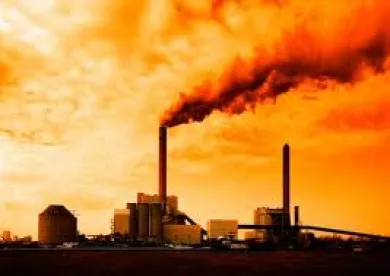On October 10, 2017, EPA Administrator Scott Pruitt formally announced that he had signed a proposed rule to repeal the Obama EPA’s controversial Clean Power Plan (CPP). This proposal is the first formal step toward repealing the CPP and the beginning of a public process that the Trump Administration will use to determine whether to issue a rule to replace the CPP and, if so, what a replacement rule will look like.
Although the CPP was never implemented – the U.S. Supreme Court stayed the rule in February 2016 to ensure that it would not come into effect until the courts could determine whether it was lawful – it was the cornerstone of the Obama Administration’s broader Climate Action Plan. The rule aimed to reduce total greenhouse gas (GHG) emissions from existing coal- and natural-gas-fired power plants by 32 percent by 2030 as compared to 2005 levels. In essence, it created a regulatory system that was designed to shut down a number of coal-fired power plants and replace them with renewable generation and, to a lesser extent, gas-fired generation.
The rule was promulgated under Section 111(d) of the Clean Air Act, which gives EPA authority to require states to set “standards of performance” for each existing plant within its borders. Although the CPP purported to give states broad discretion, it creates a strong incentive for states to participate in a nationwide cap-and-trade program operated by EPA. For many states, this was the only feasible option for complying with the rule.
The emission reduction requirements were based on EPA’s view of the “best system of emissions reduction” (BSER) that could be used to reduce CO2 emissions from the fleet of existing fossil fueled power plants. In developing the CPP, the Agency determined that the “best system of emissions reduction” encompassed three “building blocks:”
(1) Improving the efficiency (i.e., the heat rate) of existing coal-fired power plants;
(2) Shifting power generation from existing coal-fired plants to existing natural gas-fired plants; and
(3) Shifting power generation from existing coal- and gas-fired plants to new zero-emitting facilities, mostly wind and solar.
In the proposed rule signed on October 10th, the Trump EPA proposes to find that building blocks (2) and (3) exceed the bounds of EPA’s authority under CAA Section 111(d). With the exception of the CPP, all of the other performance standards EPA previously issued under Section 111 have been based on a BSER consisting of technological or operational measures that can be applied to or at a single source. Instead of adhering to this interpretation and its historical practice, the Obama Administration set power plant emission limits that can only be met by requiring the owners of existing power plants to build or subsidize the construction of other types of power plants (primarily wind and solar). In the proposed rule, EPA notes:
[T]he CPP encompassed measures that would generally require power generators to change their energy portfolios through generation-shifting (rather than better equipping or operating their existing plants), including through the creation or subsidization of significant amounts of generation from power sources entirely outside the regulated source categories, such as solar and wind energy. This raised substantial concerns that the CPP would necessitate changes to a state’s energy policy, such as a grid-wide shift from coal-fired to natural gas-fired generation, and from fossil fuel-fired generation to renewable generation.
As a result, EPA’s proposed repeal reconsiders this interpretation of Section 111(d) and proposes – consistent with the statute’s text, context, and legislative history as well as the agency’s historical practice – to interpret BSER to require measures that apply to or at the source itself. Under this interpretation, owner or operators of existing power plants can only be required to make emission reductions that can be achieved by making physical or operational changes at individual power plants. EPA will take public comment on the proposed repeal and its proposed interpretation of Section 111(d) through December 15, 2017.
Importantly, EPA’s repeal proposal does not address the scope of any potential replacement, what technological or operational measures may be appropriate in such a replacement, or even when or if such a replacement might be issued. Instead, the agency promises to solicit further public input on these issues in the near future.




 />i
/>i

